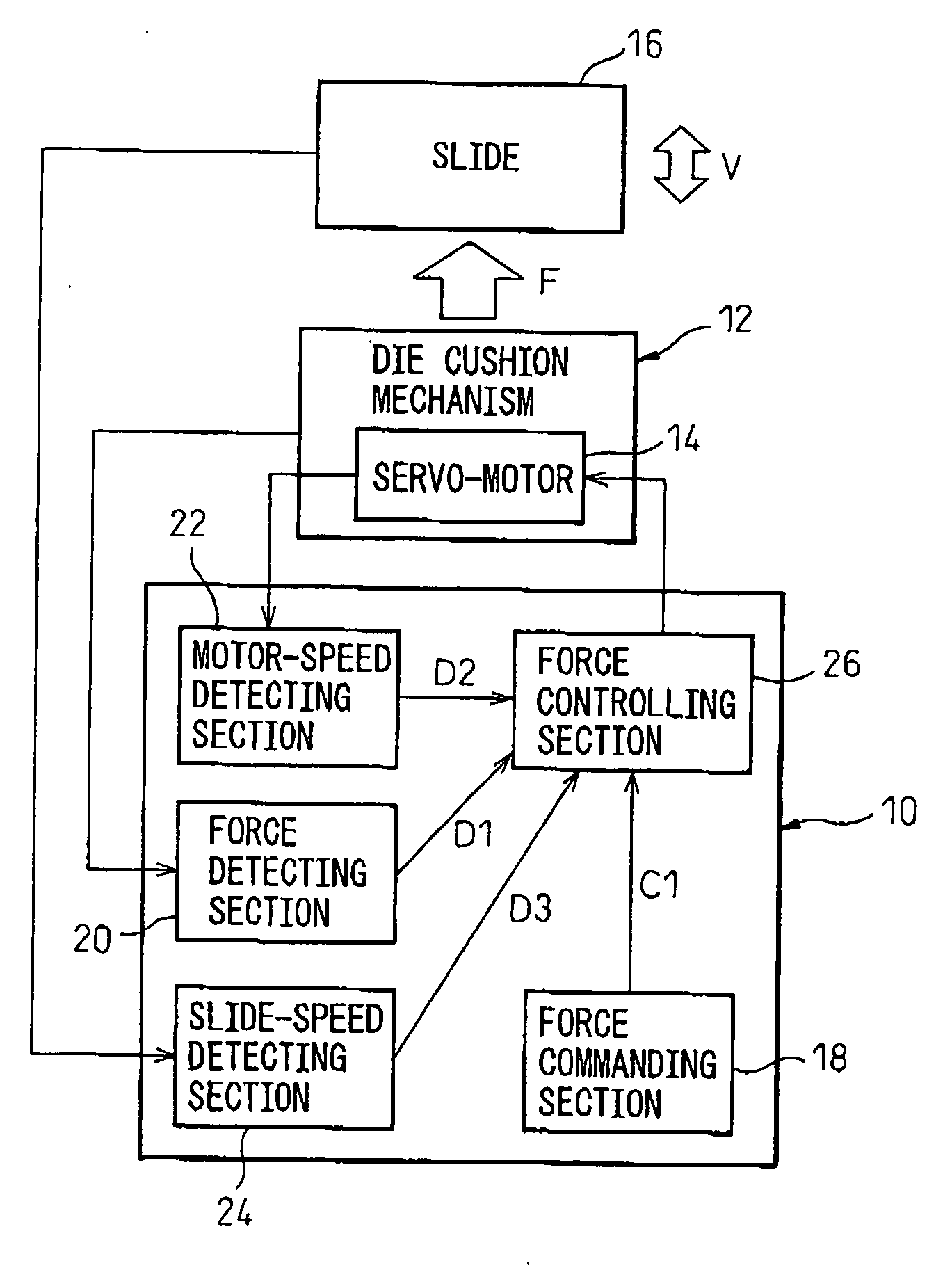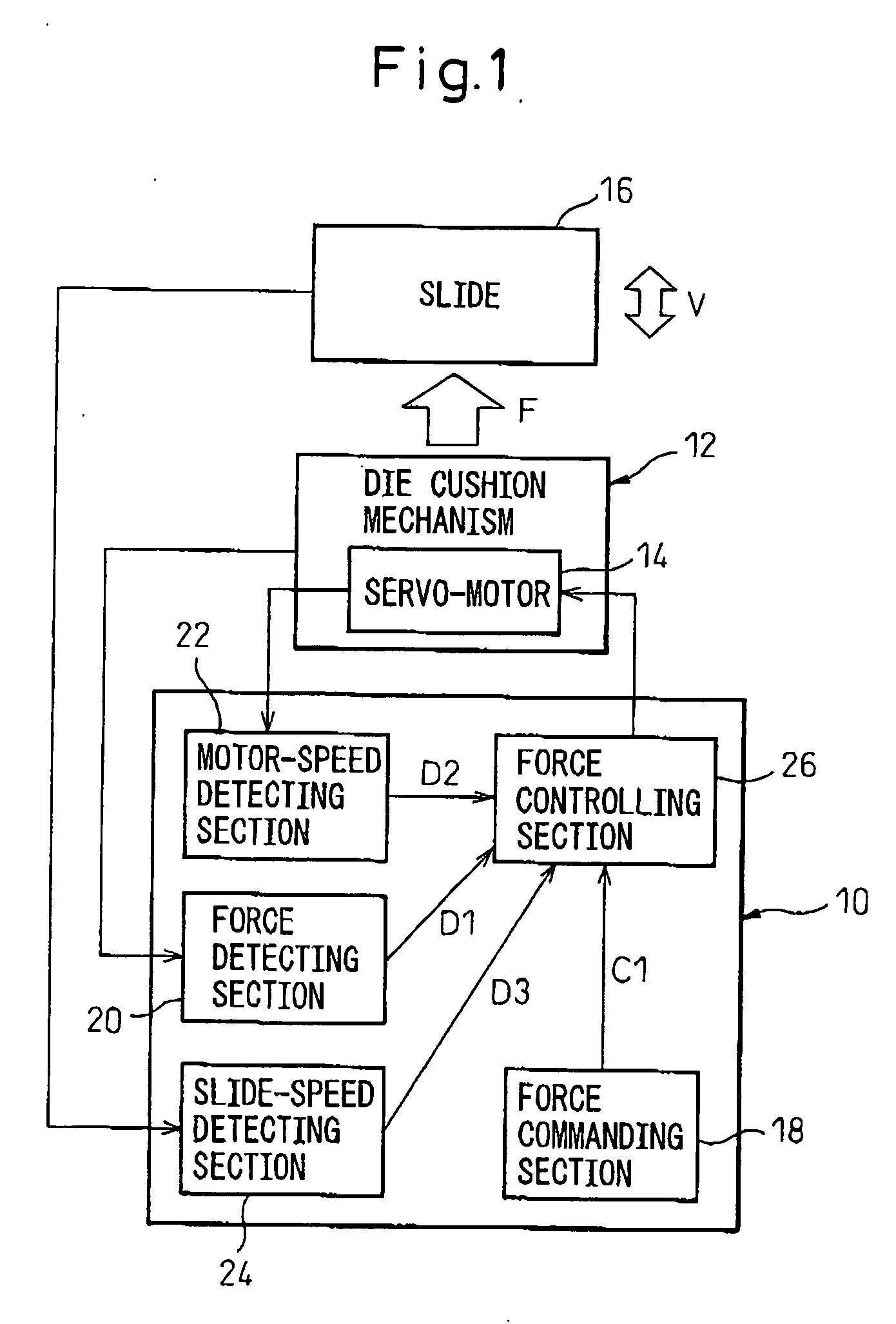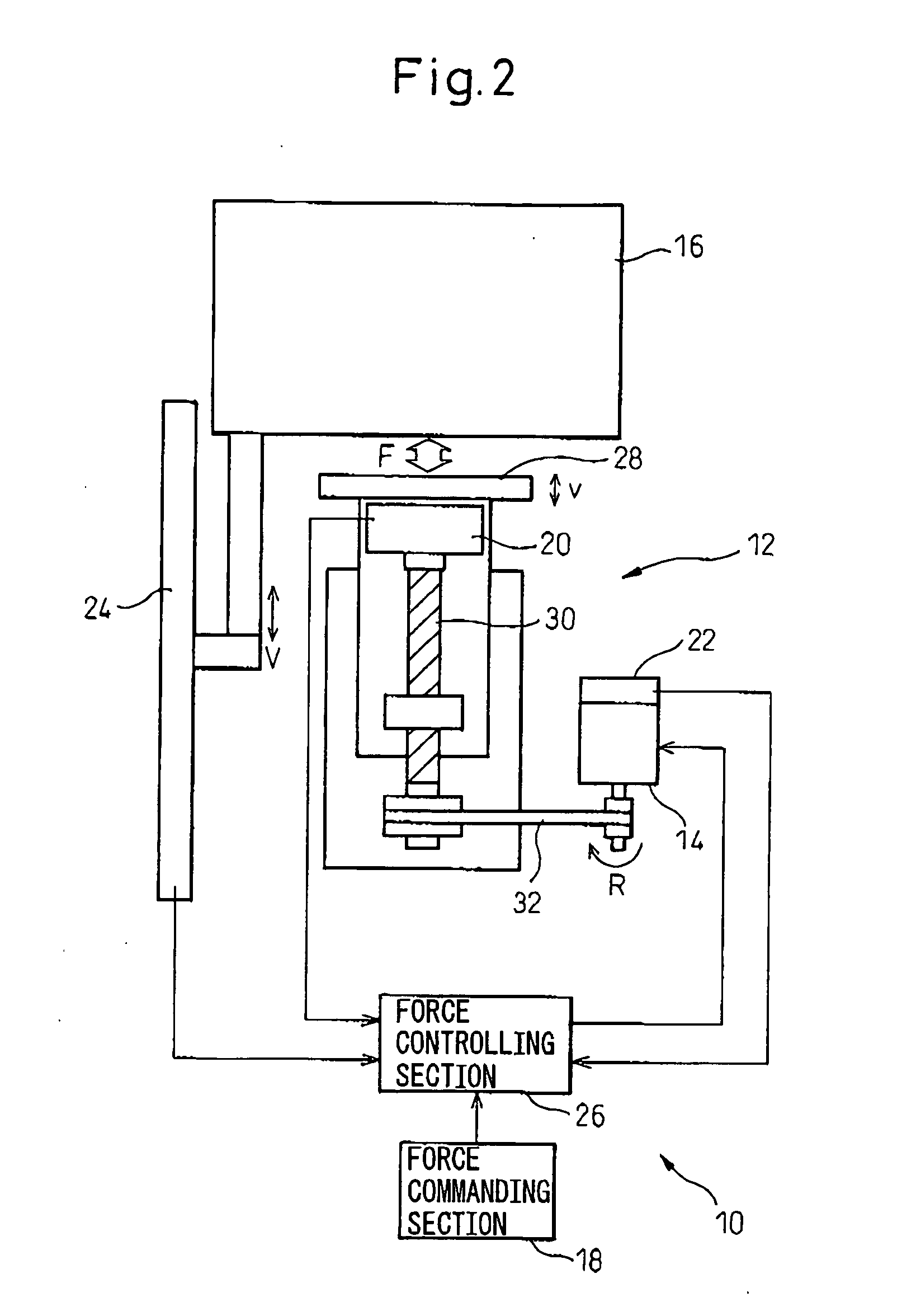Die cushion mechanism, and apparatus and method for controlling the same
- Summary
- Abstract
- Description
- Claims
- Application Information
AI Technical Summary
Benefits of technology
Problems solved by technology
Method used
Image
Examples
first embodiment
[0033] In a control apparatus 10 shown in FIG. 3, the force controlling section 26 includes a speed calculating section 34 for calculating, from the force command value C1 and the force detected value D1, a speed command value C2 to be commanded to the servo-motor 14; and a speed controlling section 36 for correcting the speed command value C2 calculated by the speed calculating section 34 by using the slide-speed detected value D3, and controlling the operating speed R of the servo-motor 14 based on the corrected speed command value and the motor-speed detected value D2 (i.e., subtracting the operating speed feedback value of the servo-motor 14 from the speed command value after being corrected). Thus, the force controlling section 26 executes the force control by controlling the operating speed R of the servo-motor 14. In this connection, it is advantageous that the speed controlling section 36 corrects the speed command value C2 by adding the slide-speed detected value D3 to the...
second embodiment
[0035] In the control apparatus 10 shown in FIG. 4, the force commanding section 18 includes a time-constant setting section 38 for setting a rise time constant T of the force command value C1. Also, the force controlling section 26 includes a time-constant adjusting section 40 for adjusting the rise time constant T set by the time-constant setting section, on the basis of the slide-speed detected value D3 detected by the slide-speed detecting section 34. Thus, the force controlling section 26 executes the force control on the basis of the force command value C1 including the rise time constant T adjusted by the time-constant adjusting section 40.
[0036] If the force control is not based on a step-like force command but is based on the force command value C1 including the desired rise time constant T, the force deviation at the initial stage of control is diminished, so that the overshoot of the force can be effectively reduced. Further, in the above configuration, the rise time con...
third embodiment
[0040] The control apparatus 10 shown in FIG. 6 is particularly effective in the configuration wherein the cushion pad 28 is operated in a preliminary acceleration motion just before collision. In this embodiment, the control apparatus 10 further includes a speed commanding section 44 for commanding a preliminary-speed command value C3 used for the above-described preliminary acceleration control to the speed controlling section 42 of the force controlling section 26. The speed controlling section 42 adjusts the preliminary-speed command value C3 commanded by the speed commanding section 44 on the basis of the slide-speed detected value D3 detected by the slide-speed detecting section 24. Thereby, when the cushion pad 28 is moved in the preliminary acceleration, it is possible to start the servo-motor 14 at an optimum preliminary speed v corresponding to the actual moving speed V of the slide 16.
[0041] In the third embodiment described above, it is advantageous that the speed contr...
PUM
| Property | Measurement | Unit |
|---|---|---|
| Time | aaaaa | aaaaa |
| Force | aaaaa | aaaaa |
| Pressure | aaaaa | aaaaa |
Abstract
Description
Claims
Application Information
 Login to View More
Login to View More - R&D
- Intellectual Property
- Life Sciences
- Materials
- Tech Scout
- Unparalleled Data Quality
- Higher Quality Content
- 60% Fewer Hallucinations
Browse by: Latest US Patents, China's latest patents, Technical Efficacy Thesaurus, Application Domain, Technology Topic, Popular Technical Reports.
© 2025 PatSnap. All rights reserved.Legal|Privacy policy|Modern Slavery Act Transparency Statement|Sitemap|About US| Contact US: help@patsnap.com



